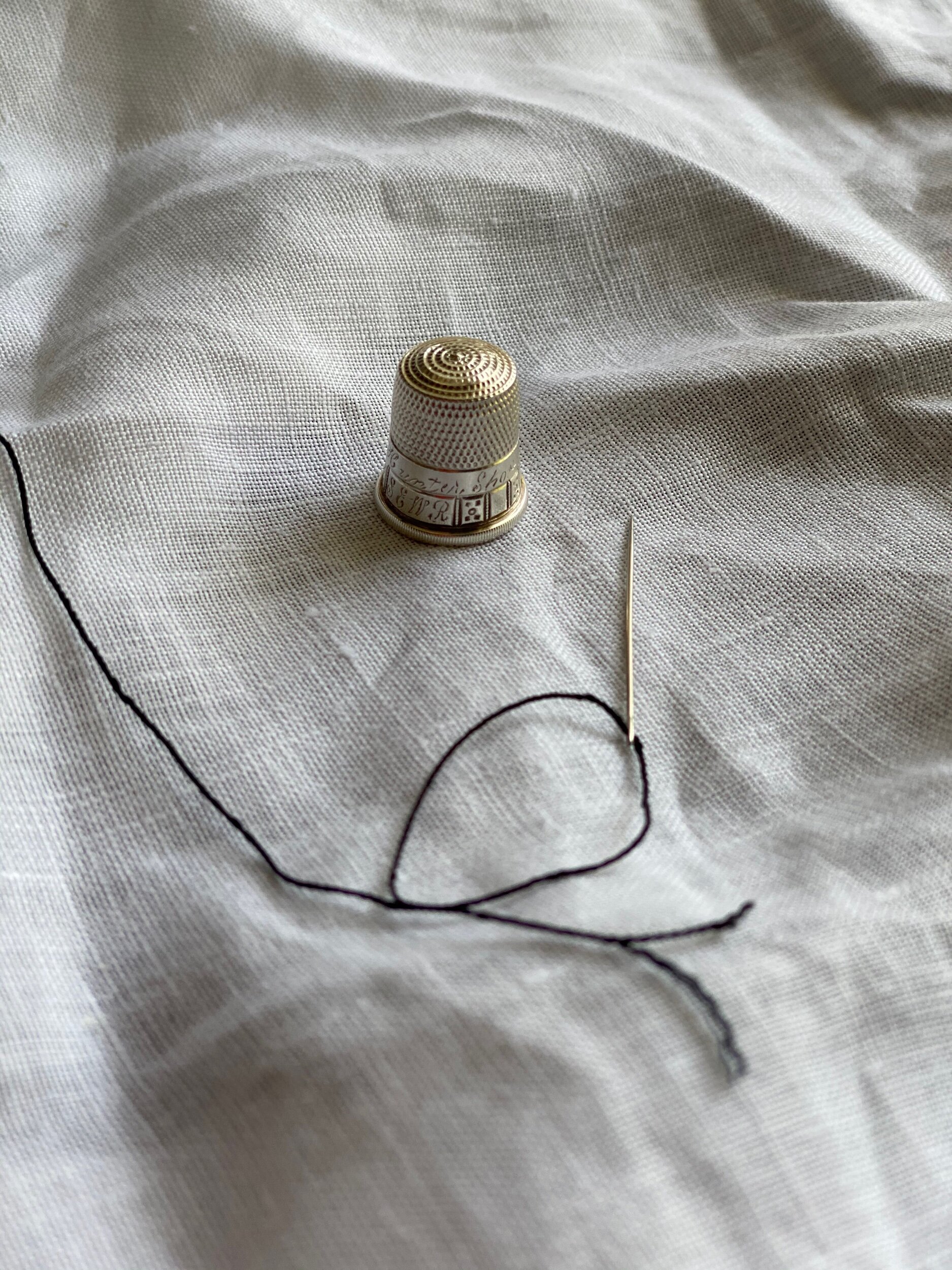I have put together a basic hand sewing tools and guide for you! This is based on my experience sewing historical recreations of 18th-century and early-19th-century garments. The same materials work beautifully for modern hand sewing. None of the links are sponsored just materials I love to work with. This is just a guide, if you have a sewing tin at home from a family member definitely look there first. I bet there are some treasures to be found!
Needles:
I like to use a longer needles. This often means I use what is known as a sharp, appliqué and even embroidery needles. (Beading and darning needles are way too long). When selecting a size the bigger the number associated with the needle the finer the needle, the smaller the number the more sturdy the needle. Make sure to match your needle choice with your fabric weight.
For example:
Fine linens: size 10-12
Medium weight silk, linen, cotton or wool: size 9-11.
Very heavy weight wool: size 3-5
Suggested:
I love Bohin needles and you can find a great selection here:
Pins:
Like needles I like to use a longer pin. My preference is fine dressmakers pins that are 1 1/4 long.
Suggested: Dressmaking pins (size 20-1 1/4) they are fine and longer and do not have a plastic or glass head which is especially nice if you are doing historical sewing. I love Iris brand. You can find them here: https://www.voguefabricsstore.com/iris-swiss-superfine-pins-500.html
Small scissors (for snipping threads):
Tiny, sharp scissors are a must for clipping threads cleanly next to the work.
Suggested: William and Whiteley and Sons is producing scissors in England using traditional scissor making methods. Pick up a set here.
Thread:
Natural fibers are my preference based on historical sewing methods. Linen and silk are the two fibers that are strong and historically appropriate.
Linen
The weight of the linen should match the weight of the fabric. When shopping for linen you will notice numbers associated with the thread, for example 80/2 or 50/3. The first number has to do with the weight of the thread: the higher the number the finer the thread. The second number is the ply, or how many strands of thread are twisted together (like yarn) to make the thread. Don’t forget your beeswax to coat the thread! If you sew with linen sans beeswax the thread will fray. Make sure you run the linen over the beeswax several times until it is coated.
Silk
While you may think silk is fancy, historically it was a very commonly used sewing thread. It is stronger than steal. You can use it to sew up any fiber. Normally you will match the weight of the silk with the weight of the fabric. However there is one exception: 18th-century silk clothing. Silk garments tended to be stitch with heavier weight silk than the fabric. If you are sewing an 18th-century silk gown choose a heavier weight thread than you fabric.
Suggested: Burnley and Trowbridge have a great selection of both silk and linen threads. Check them out here.
Thimble: You may have one in your stash or you can find them at antique stores or on etsy. Do not buy a one size fits all. It should fit on the middle finger of your dominate hand. Not too tight but not too loose it falls off.
Suggested: These are amazing and are good for a wish list.
Pencil (make sure it is sharp)
Straight edge
Measuring device

